||||||||||||||||||||
||||||||||||||||||||
�
History
The LISP Network
Topics
Evolution to the NextGeneration of Data Networks
Tutorials
Dino Farinacci
Victor Moreno
Offers & Deals
Highlights
Settings
Support
Sign Out
||||||||||||||||||||
Victor
Moreno
Farinacci
Dino
History
Copyright
Topics
©
Systems,
Cisco
2019
Inc,
Published
Tutorials
Cisco
Press
by:
No
Offers & Deals
rights
All
of
reserved.
part
this
may
mechanical,
electronic
means,
by
photocopying,
or
or
any
including
Highlights
retrieval
without
system,
storage
information
any
and
written
brief
inclusion
the
except
publisher,
in
quotations
of
for
reproduced
review.
book
be
a
transmitted
or
in
any
form
by
recording,
or
permission
from
the
Settings
19
01
Support
Library
Sign Out
of
Congress
Control
Number:
ISBN13:
9781587144714
ISBN10:
1587144719
Warning
and
Disclaimer
information
to
This
book
provide
designed
is
about
(LISP).
been
Every
has
effort
made
to
this
make
implied.
fitness
warranty
possible,
no
or
but
is
Locator/ID
Separation
the
book
and
as
complete
as
accurate
as
Protocol
authors,
The
Press,
basis.
information
is”
“as
on
provided
is
an
Cisco
and
Cisco
with
or
responsibility
nor
Systems,
liability
neither
shall
have
Inc.
to
entity
person
any
damages
arising
the
from
or
any
to
respect
loss
information
book
contained
in
this
or
it.
accompany
that
from
programs
or
discs
of
use
the
may
the
The
opinions
The
expressed
Inc.
Systems,
Cisco
of
in
this
book
belong
the
to
author
and
necessarily
not
are
those
Trademark
Acknowledgments
||||||||||||||||||||
�
||||||||||||||||||||
All terms mentioned in this book that are known to be trademarks or service marks
have been appropriately capitalized. Cisco Press or Cisco Systems, Inc., cannot attest to
the accuracy of this information. Use of a term in this book should not be regarded as
affecting the validity of any trademark or service mark.
Special Sales
For information about buying this title in bulk quantities, or for special sales
opportunities (which may include electronic versions; custom cover designs; and
content particular to your business, training goals, marketing focus, or branding
interests), please contact our corporate sales department at corpsales@pearsoned.com
or (800) 3823419.
For government sales inquiries, please contact governmentsales@pearsoned.com.
For questions about sales outside the U.S., please contact intlcs@pearson.com.
Feedback Information
At Cisco Press, our goal is to create indepth technical books of the highest quality and
value. Each book is crafted with care and precision, undergoing rigorous development
that involves the unique expertise of members from the professional technical
community.
Readers' feedback is a natural continuation of this process. If you have any comments
regarding how we could improve the quality of this book, or otherwise alter it to better
suit your needs, you can contact us through email at feedback@ciscopress.com. Please
make sure to include the book title and ISBN in your message.
We greatly appreciate your assistance.
EditorinChief
Mark Taub
Alliances Manager, Cisco Press
Arezou Gol
Product Line Manager
Brett Bartow
||||||||||||||||||||
�
Managing Editor
Sandra Schroeder
Development Editor
Marianne Bartow
Senior Project Editor
Tonya Simpson
Copy Editor
Chuck Hutchinson
Technical Editor(s)
Ramiro Garza Rios, Matt Esau
Editorial Assistant
Cindy J. Teeters
Cover Designer
Chuti Prasertsith
Composition
Indexer
Proofreader
||||||||||||||||||||
||||||||||||||||||||
�
Icons Used in This Book
History
Topics
Tutorials
Offers & Deals
Highlights
Settings
Support
Sign Out
||||||||||||||||||||
||||||||||||||||||||
�
||||||||||||||||||||
Introduction
History
Offers & Deals
Highlights
Topics
Tutorials
The LISP Network provides indepth understanding on the most common applications
of the Locator/ID Separation Protocol (LISP) and new applications of LISP that are
helping address new trends and challenges in the networking industry. These trends
are found in the data center cloud, the campus or branch access network, the WAN
edge, the core of a service provider network, and a multitude of purposebuilt networks
that have emerged to support specific applications. LISP applications include data
center workload mobility across private and public cloud locations, enablement of
container networking, high rate mobility in cellular and fixed infrastructure, next
generation WAN models for scale and automation, massive scale Internet of Things
connectivity, data confidentiality, IPv6 transition, multicast, and traffic engineering.
This book provides a fundamental understanding of the underlying architecture and
how it pertains to each application of LISP. The book is aimed at giving you the vision
of how LISP can dramatically change the way networking is done in response to
modernday challenges and requirements.
Settings
Support
Sign Out
GOALS AND METHODS
This book answers important questions for any fastgrowing technology in the market,
such as
• What problems does the technology address?
• How does the technology address the problems?
• How does the technology work?
• What are its applications?
• What is the future of this technology?
WHO SHOULD READ THIS BOOK?
This book addresses the preceding questions and provides insight into the latest
||||||||||||||||||||
�
applications gaining traction in the industry. The emphasis of the book is on the
architecture of LISP and its applicability to modernday IT requirements and trends.
The book is an indispensable guide for any reader who wants to understand the future
of the Internet and how LISP can be the solution for many of the challenges that
enterprises face today to evolve the network into the next generation of Internet and
support trends such as Agile Network programmability, IoT, security, and IPv6 with
LISP.
We have structured the content so that the book is implementation agnostic and
focused on the essence of the technology and its applicability. The intent was to
separate timeless topics on technology architecture and applicability from
implementationdependent information.
HOW THIS BOOK IS ORGANIZED
Chapter 1: LISP and the Future of Networking
This chapter introduces the motivation, base principles, and history behind LISP. You
read about how the base principles upon which LISP is built relate to the challenges
and evolution of the Internet. The chapter also introduces some of the revolutionary
applications that LISP enables. These applications are discussed in more detail in later
chapters.
Chapter 2: LISP Architecture
The objective of this chapter is to provide a comprehensive overview of the technical
architecture of LISP and how it works. You learn about the different architectural
components of LISP and the key mechanisms and workflows that the protocol uses to
deliver different network services.
Chapter 3: Data Center Trends
This chapter discusses the predominant trends of the data center and the role of LISP
in enabling these trends. It examines how LISP and the revolutionary concepts
introduced throughout its development have played a pivotal role in the evolution of
the connectivity required in data centers to date. The chapter discusses mobility,
network segmentation, and policy along with the potential role of LISP in the data
center network moving forward.
Chapter 4: The WideArea Network: Bringing Traffic from Access to the Data Center
||||||||||||||||||||
||||||||||||||||||||
�
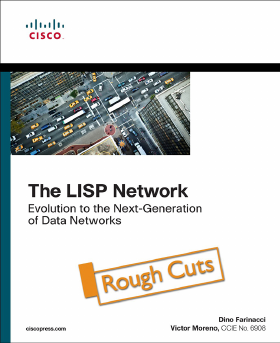
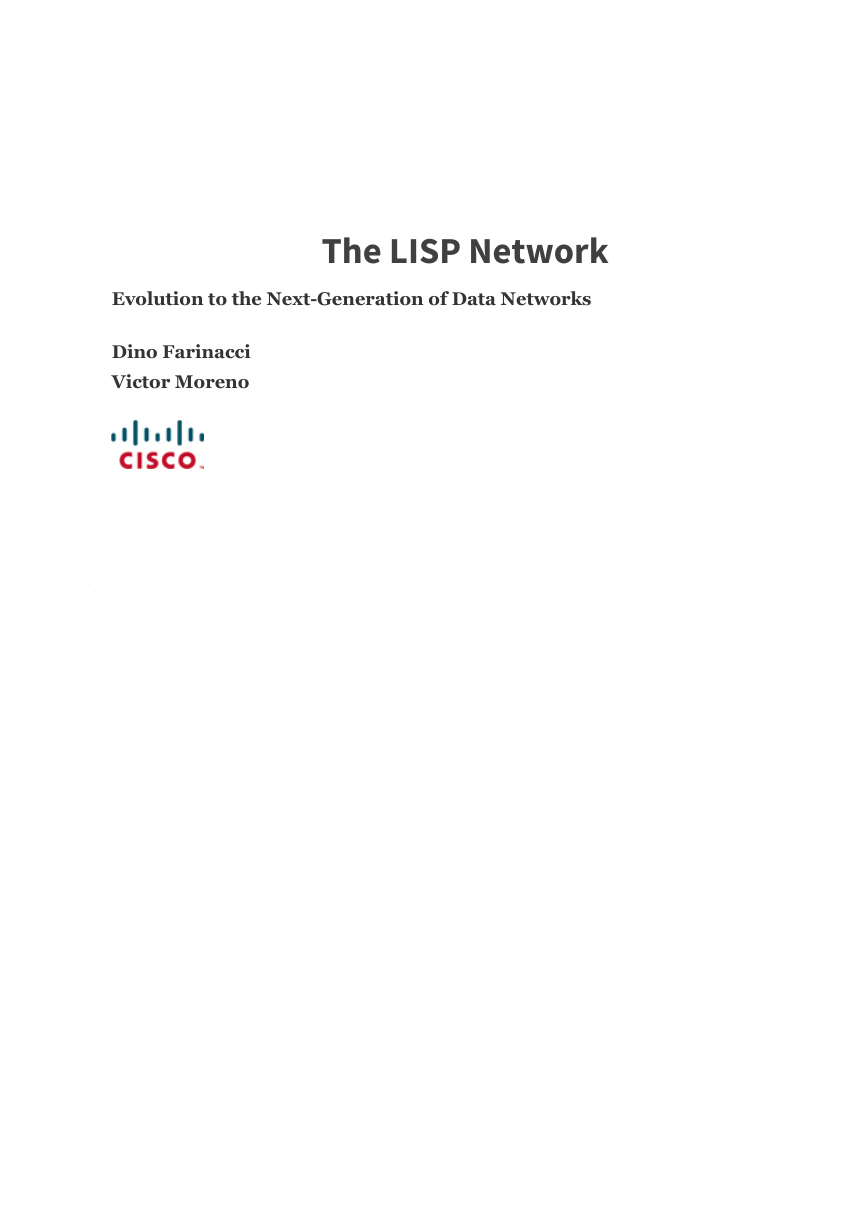
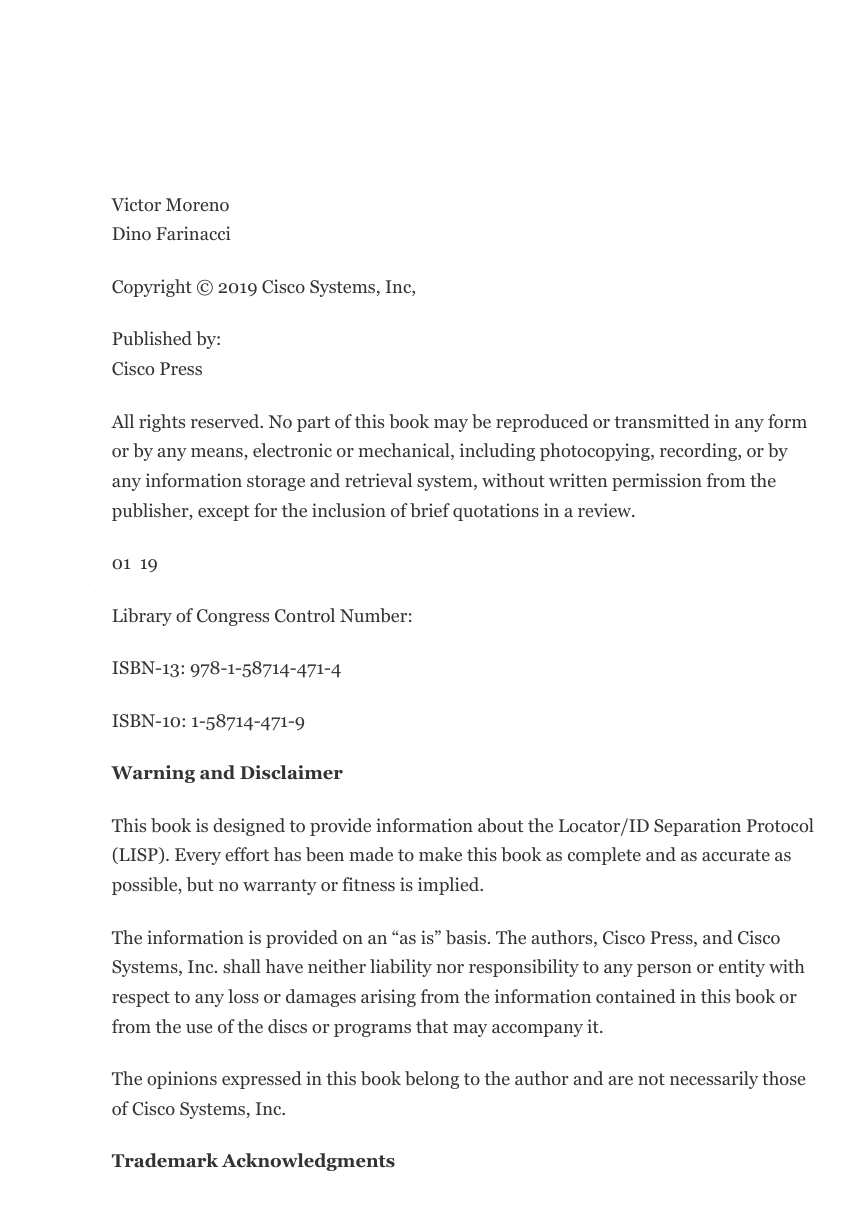
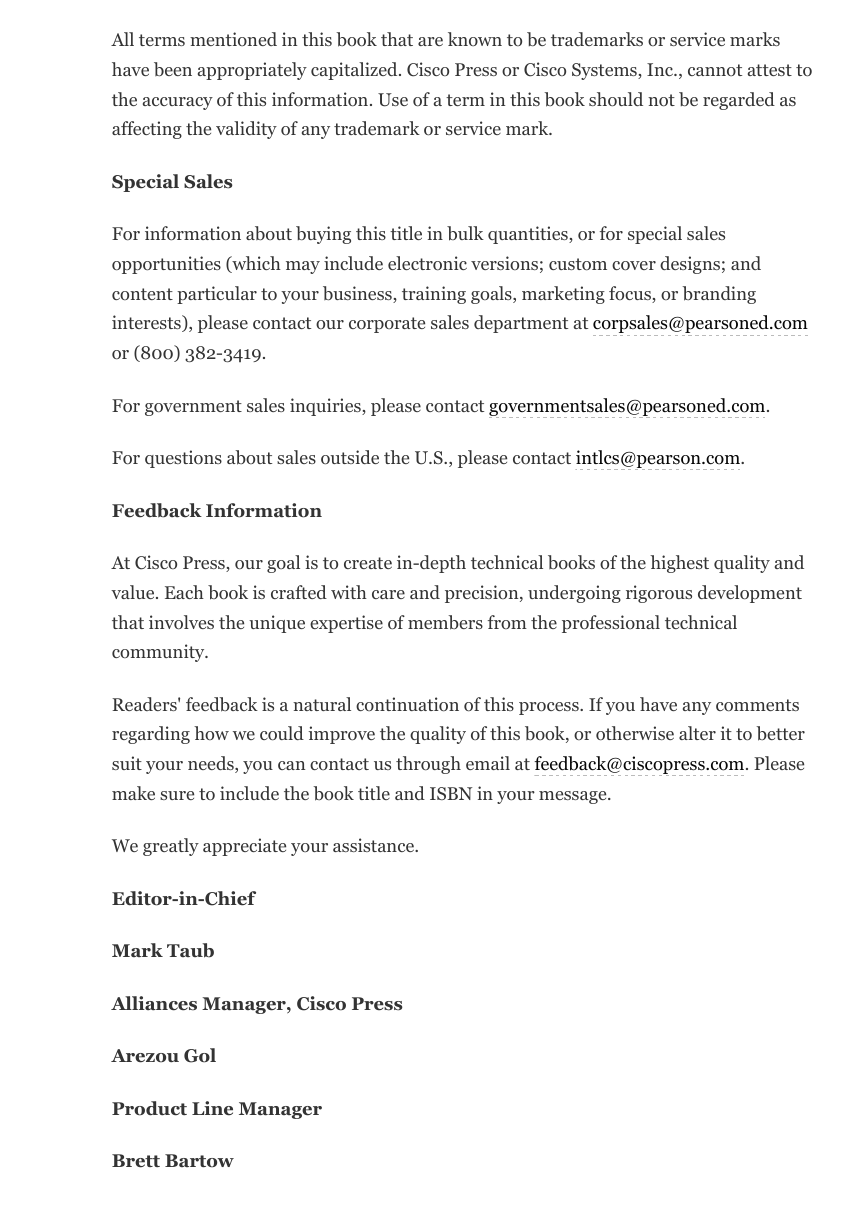


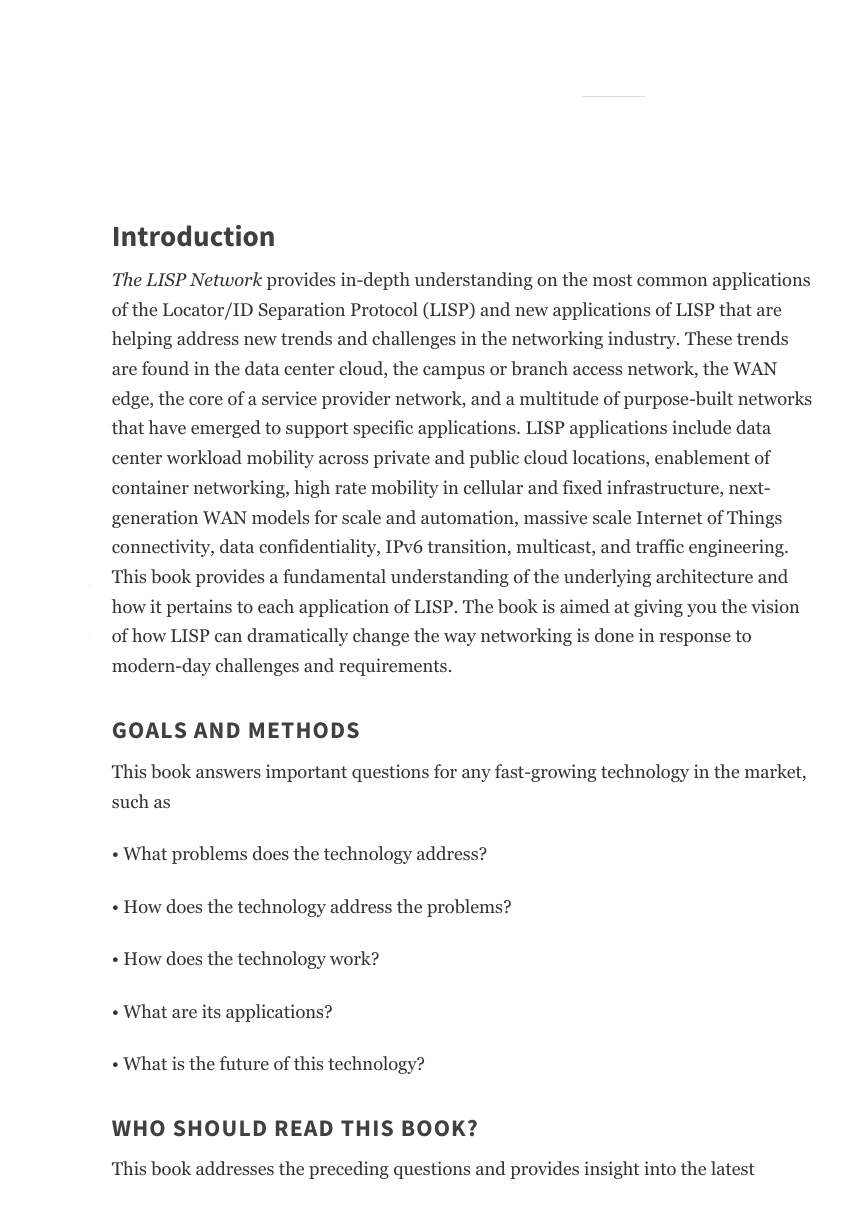
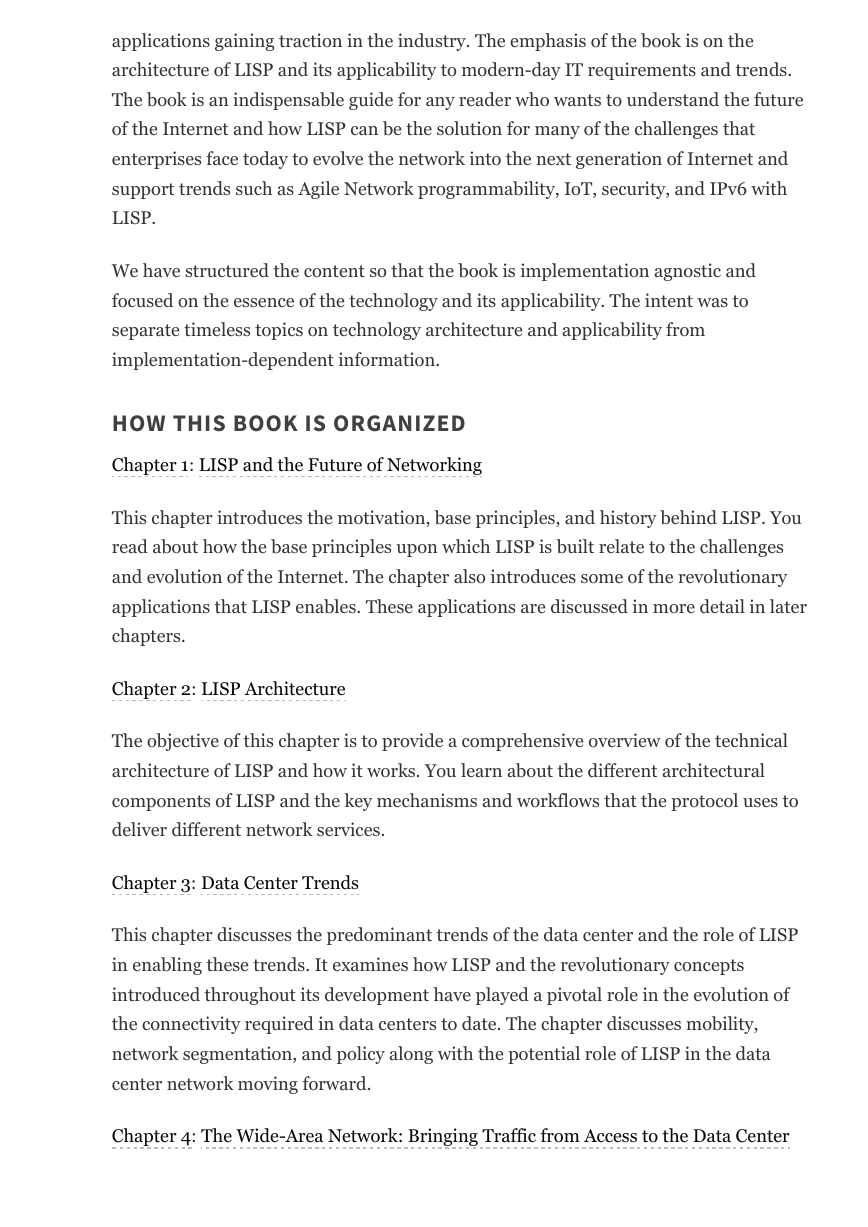








 2023年江西萍乡中考道德与法治真题及答案.doc
2023年江西萍乡中考道德与法治真题及答案.doc 2012年重庆南川中考生物真题及答案.doc
2012年重庆南川中考生物真题及答案.doc 2013年江西师范大学地理学综合及文艺理论基础考研真题.doc
2013年江西师范大学地理学综合及文艺理论基础考研真题.doc 2020年四川甘孜小升初语文真题及答案I卷.doc
2020年四川甘孜小升初语文真题及答案I卷.doc 2020年注册岩土工程师专业基础考试真题及答案.doc
2020年注册岩土工程师专业基础考试真题及答案.doc 2023-2024学年福建省厦门市九年级上学期数学月考试题及答案.doc
2023-2024学年福建省厦门市九年级上学期数学月考试题及答案.doc 2021-2022学年辽宁省沈阳市大东区九年级上学期语文期末试题及答案.doc
2021-2022学年辽宁省沈阳市大东区九年级上学期语文期末试题及答案.doc 2022-2023学年北京东城区初三第一学期物理期末试卷及答案.doc
2022-2023学年北京东城区初三第一学期物理期末试卷及答案.doc 2018上半年江西教师资格初中地理学科知识与教学能力真题及答案.doc
2018上半年江西教师资格初中地理学科知识与教学能力真题及答案.doc 2012年河北国家公务员申论考试真题及答案-省级.doc
2012年河北国家公务员申论考试真题及答案-省级.doc 2020-2021学年江苏省扬州市江都区邵樊片九年级上学期数学第一次质量检测试题及答案.doc
2020-2021学年江苏省扬州市江都区邵樊片九年级上学期数学第一次质量检测试题及答案.doc 2022下半年黑龙江教师资格证中学综合素质真题及答案.doc
2022下半年黑龙江教师资格证中学综合素质真题及答案.doc